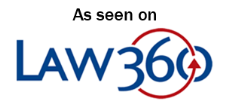 The impassioned debate over President Donald Trump’s proposed border wall has deflected
The impassioned debate over President Donald Trump’s proposed border wall has deflected  attention from new barriers that his administration has built against legal immigration. While few people have noticed, the Trump administration has been quietly stymieing visa seekers with a bureaucratic wall, consisting of red tape and a more skeptical posture from immigration officers.
attention from new barriers that his administration has built against legal immigration. While few people have noticed, the Trump administration has been quietly stymieing visa seekers with a bureaucratic wall, consisting of red tape and a more skeptical posture from immigration officers.
The number of temporary (nonimmigrant) visas and immigrant visas issued by the U.S. declined by 7 percent and 5 percent, respectively, between fiscal years 2017 and 2018, an article in Forbes Magazine noted, citing government and think tank statistics.[1] Numerous credible press reports indicate that processing delays have also increased, partly as a consequence of longer and more complex forms and time-consuming requests for more information.[2][3]
One of the critical challenges that visa seekers and their attorneys are facing is Trump’s "Buy American and Hire American" executive order. The order was issued on April 18, 2017, shortly after the inauguration, with the stated aim of protecting U.S. workers and businesses. The order directed the relevant cabinet officials to provide guidance on its implementation, but no follow-up has been forthcoming, which has made the confusion even worse.
The order has presented significant new challenges in the preparation of business plans for visa applicants. These plans, describing the business' mission, market, and operating strategy, are carefully read by immigration authorities to determine whether the applicant has an idea for an enterprise that is both economically viable and beneficial to the United States.
"Buy American and Hire American" has forced business plan writers to begin adapting on the fly. Despite the new obstacles, our experience is revealing that fact-based and research-driven business plans can bolster attorneys’ arguments to help their clients secure visas and clear the order's “bureaucratic wall.” The best way to deal with "Buy American and Hire American" is by meeting the challenge head-on.
Many immigration lawyers agree that it’s essential now to explicitly address the order in the E-2 business plan for investors by quantifying the impact of the proposed venture on the U.S. economy. One way to address it is by highlighting positive economic knock-on effects that clearly position a company as one that is beneficial to the U.S. economy.
In the post-"Buy American and Hire American" era, it’s more important than ever to develop a strong narrative that demonstrates the feasibility of the proposed business, as well as its contribution to the United States. On the latter issue, we believe that the facts speak loudly that immigrant entrepreneurs make tremendous contributions to U.S. business.
The Brookings Institution recently found that 43 percent of companies in the 2017 Fortune 500 were founded or co-founded by an immigrant or the child of an immigrant. Among the top 35 companies, the immigrants’ share was 57 percent. The challenge for business plan writers is to present a convincing case for visa applicants who aren’t yet at the level of Sergey Brin, the Russian immigrant who helped found Google, but who aspire to get there.
For instance, consider the recent case of a Latin American entrepreneur who launched a business to provide 24-hour house calls for dental emergencies. The idea was to make dental services more convenient for patients. But a key fact that needed to be underscored for the immigration adjudicator was that the business also had the potential to help the U.S. economy.
How was that possible? Well, our research showed that the U.S. spends $1.6 billion a year on hospital emergency room treatment of people for dental emergencies. The business plan noted that if the dental emergency house call business caught on, it might reduce those large outlays for treating toothaches and infected root canals in the hospital.
Likewise, business plan writers must address the “hire American” provisions in the E-2 visa for key managers. This category of visa allows a U.S. entity, majority-owned by nationals of the treaty country, to transfer an essential employee (a manager or someone who has a unique knowledge of certain processes) to the U.S.
An effective way to address "Buy American and Hire American" in the context of E-2 is by emphasizing the complexity of the business and how the foreign key employee will be instrumental to the U.S. entity’s success. The idea is to drive home the fact that this is anything but a "simple" position that any U.S. worker can fill.
Sometimes, it’s necessary to dig into the labor history of the visa applicant to make an argument on his or her behalf. There was a recent case involving a pizza chef from Brazil who was trying to go to work at a restaurant on the West Coast. Obviously, there are already lots of people making pizzas in the U.S. So what was so special about this particular chef that made him worthy of a visa?
Well, it turns out he was a serial entrepreneur who had started a dozen successful restaurants in Brazil. Moreover, he’d made these businesses succeed, even though Brazil has been one of the most volatile and poorly managed economies in the world over the past 25 years. When Brazil’s inflation was running at 5,000 percent a year, and it took a paper bag of money to pay for a meal, he wasn’t at all deterred from launching a new restaurant. It wasn’t difficult to make the case that an entrepreneur who survived in Brazil’s basket case economy would thrive in the U.S.
Another method for addressing "Buy American and Hire American" is by focusing on the macro employment picture for the U.S. economy rather than the micro view for a given business. For instance, in an application for an H-3 visa for a tech worker, we provided a 400-word analysis of the shortage of skilled workers in the U.S. labor market.
Our section was authoritatively sourced. It included a chart from the U.S. Bureau of Labor Statistics, citations from studies by Goldman Sachs and London’s Centre for Economic Policy Research, and an excerpt from the Economist magazine. All of the sources were marshaled to make the case that foreign skilled workers aren’t so much of a drag on the economy but a necessity to keep it functioning smoothly.
There's no doubt that the "Buy American and Hire American" order and other immigration impediments imposed by the Trump administration have made life more challenging for those of us who work on visa matters. But there's no reason to get overly pessimistic either. A well-crafted business plan, founded on reliable data, is a powerful antidote to the barriers imposed by the order. With careful writing and solid research, the business plan can play a vital role in helping visa-seekers surmount the bureaucratic wall.
________________________________________________________________________________
Marco Scanu is the founder of Visa Business Plans.
The opinions expressed are those of the author(s) and do not necessarily reflect the views of the firm, its clients, or Portfolio Media Inc., or any of its or their respective affiliates. This article is for general information purposes and is not intended to be and should not be taken as legal advice.
[1] Forbes Magazine “New Data Reveal State Department Visa Denials Surged In 2018” March 1, 2019
[2] Washington Post “U.S. Immigration agency to more closely monitor caseworkers, documents show” March 16,2018
[3] New York Times “Without New Laws or Walls, Trump Presses the Brake on Legal Immigration” Dec. 20, 2017




[7].png)
[8].png)